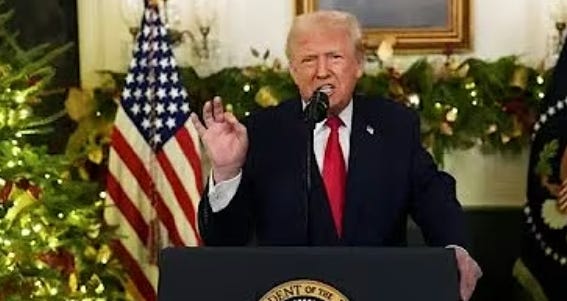It is commonly held that prices of goods and services can produced by means of supply and demand curves. These curves describe the relationship between the prices and the quantity of goods supplied and demanded.
Within the framework of supply-demand curves, an increase in the price of a good is associated with a fall in the quantity demanded and an increase in the quantity supplied. Conversely, a decline in the price of a good is associated with an increase in the quantity demanded and in a decline in the quantity supplied.
The equilibrium price is established at the point where the two curves intersect. At this point, the quantity supplied, and the quantity demanded is equal—at the equilibrium price the market is said to “clear.”
The framework of supply-demand curves rests upon the assumptions of unchanged consumer preferences and income and the unchanged prices of other goods. In reality, however, consumer preferences are not frozen, and other things do not remain constant. Obviously, then, no one could have possibly observed these curves.
Do Consumers and Producers Confront a Given Price?
In the conventional supply-demand framework, consumers and producers confront a given price; that is, at a given price, consumers demand and producers supply a certain quantity of a good. Note that the quantities here are imaginary; they are not ascertained in the real world. Economists just assume that at a particular price, a particular quantity is going to be supplied and a particular quantity is going to be demanded.
Demand is not a particular quantity, such as ten potatoes, but rather a full description of the quantity of potatoes the buyer would purchase at every price that might be charged. Likewise, supply is not a particular quantity but a complete description of the quantity that sellers would sell at each possible price. Again, at a given price, people demand a certain quantity of a good while producers are willing to supply a certain quantity.
Within this framework, neither consumers nor producers have anything to say as far as the origin of a good’s price is concerned. The price is just given. Both consumers and producers react to a given price. However, who has given the price? Where has the price come from?
Who Sets the Price in the Marketplace?
According to Ludwig von Mises:
A market price is a real historical phenomenon, the quantitative ratio at which at a definite place and at a definite date two individuals exchanged definite quantities of two definite goods. It refers to the special conditions of the concrete act of exchange. It is ultimately determined by the value judgments of the individuals involved. It is not derived from the general price structure or from the structure of the prices of a special class of commodities or services. What is called the price structure is an abstract notion derived from a multiplicity of individual concrete prices. The market does not generate prices of land or motorcars in general nor wage rates in general, but prices for a certain piece of land and for a certain car and wage rates for a performance of a certain kind.
Furthermore, producers set the price. However, consumers, by buying or abstaining from buying, are the final decision-makers as to whether the price set will lead to a profit. Note that whenever a producer sets a price for his product, it is in his interest to secure a price where the quantity that is produced can be sold at a profit. In setting this price, the producer will have to consider how much money consumers are likely to spend on the product, the prices of various competitive products, and the cost of production.
Producers are at the total mercy of consumers. If, at a set price, a producer cannot make a positive return on his investment because not enough people are willing to buy his product, the producer will be forced to lower the price to boost turnover. Obviously, by adjusting the price of the good, the entrepreneur must also adjust his costs in order to make a profit.
The Cost of Production Does Not Determine the Prices of Goods
In the supply-demand framework, the production cost is an important input in determining the prices of goods. In this framework, an increase in the cost of production shifts the supply curve to the left. As a result for a given demand curve, this raises the price of a good.
Supply and demand with respect to the increase in the cost of production shows a contradictory outcome as far as the real world is concerned. Again, we hold that it is consumer buying or abstention from buying that is the sole determining factor for the prices of goods. No individual buyer is preoccupied with the cost of producing a particular good. The price that he will agree to pay for a good is in accordance with his particular priorities at a given point in time. The cost of production is of no relevance to him.
Note the benefit that a good provides is in relation to individuals’ particular ends. The importance of various ends determines the selection of goods by individuals. The prices of goods are not set mechanically by some kind of supply-demand curves but by the goal-seeking choices of individuals.
Moreover, the cost-of-production theory runs into trouble when attempting to explain the prices of goods and services that have no cost because they are not produced—goods that are simply there, like undeveloped land. Likewise, the theory cannot explain the reason for the high prices of famous paintings. On this Murray Rothbard wrote:
Similarly, immaterial consumer services such as the prices of entertainment, concerts, physicians, domestic servants, etc., can scarcely be accounted for by costs embodied in a product.
Erroneous Nature of Supply-Demand Framework for the Whole Economy
Using the supply-demand framework economists proceed further and introduce supply and demand curves for the whole economy. They hold, for example, that if the economy is underperforming, then what is needed is a strengthening of demand by means of fiscal and monetary policies. For a given supply curve, they argue, this will push the demand curve to the right, thereby lifting overall output.
We suggest that producers initiate the introduction of new products in the real world. They set in motion increases in goods and services, and not consumers as such. Producers present new products, so to speak, to consumers who, in turn, by buying or abstaining from buying, determine the fate of products.
The Meaning of the Equilibrium Price
What, then, is the meaning of the equilibrium price that mainstream economists hold is determined by the supply and demand curves? We suggest that the existence of a general equilibrium as depicted by the intersection between the overall economy supply curve with the overall economy demand curve is questionable.
The economy as such does not exist apart from individuals. Hence, something that does not exist cannot strive to some kind general equilibrium.
The concept of equilibrium is only relevant to individuals. Equilibrium in the context of an individuals’ conscious and purposeful behavior has nothing to do with the imaginary equilibrium as depicted by popular economics.
Equilibrium is established when individuals’ ends are met. When a supplier is successful in selling his supply at a price that yields profit, he is said to have reached an equilibrium.
Similarly, consumers who bought this supply have done so in order to meet their goals. Again, every individual in his own context achieves his equilibrium whenever he reaches his goal.
Conclusion
The prices of goods in the mainstream way of thinking are established by mechanical shifts in supply and demand curves.
We hold that the benefit that a good provides is in relation to individuals’ particular ends. The importance of various ends determines the selection of goods by individuals. The means-end framework shows that the prices of goods are not set mechanically by some kind of supply-demand curves but by the goal-seeking choices of individuals.
Observe that while the cost of production in some cases would appear to be the main factor in price determination, this is not so. Ultimately, it is the evaluation of the buyer that dictates whether the price set by the supplier is going to be realized. Every buyer decides in his own context whether the price paid for a good improves his life and well-being.














